Is The North Of Argentina Worth Visiting? 7 Places Not To Miss
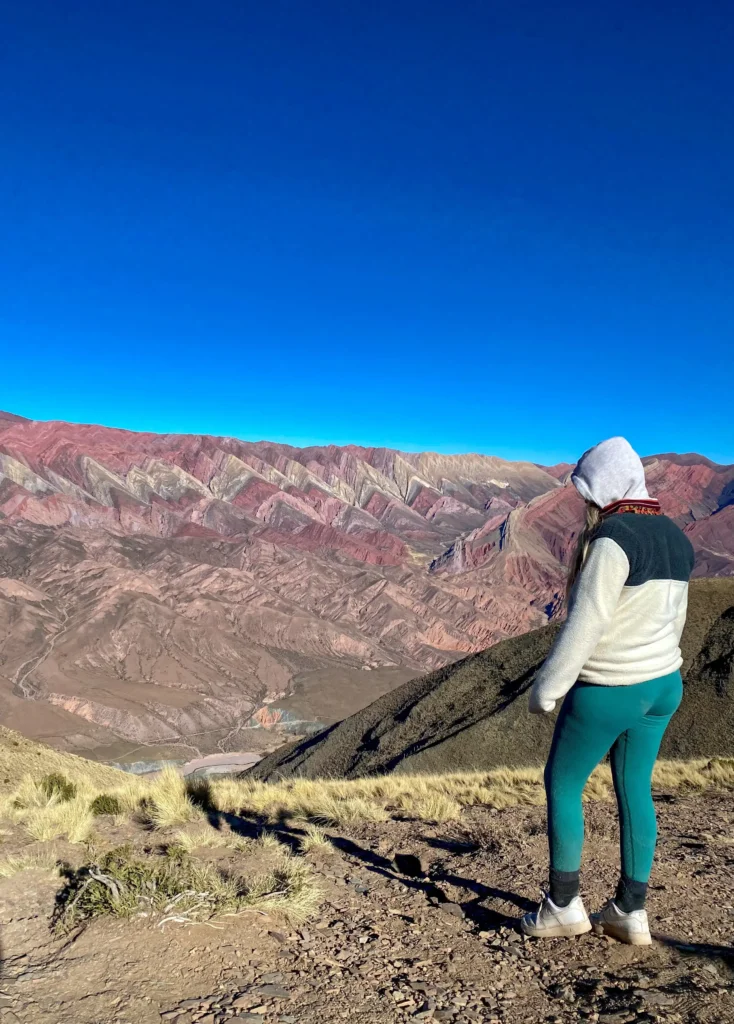
Wondering if the North of Argentina is worth visiting? Then I’m here to tell you yes, it is.
The North of Argentina is brimming with incredible landscapes, rich traditional cuisine and some of the most hospitable people I’ve ever met on my travels.
Until recently it was a region I’d never heard of and had no intention of visiting, this gateway into the country blew me away. The North of Argentina is a place every traveller should pay a visit to.
Crossing over from Bolivia into the tiny border town of La Quiaca I wasn’t sure what to expect. The border town itself isn’t anything to rave about, but as the bus journey to Humahuaca began the real beauty of the North emerged.
Isolated desert towns, an array of multi-coloured jagged mountains and impressive red rock formations filled the view from the bus window.
If you love to be out in nature then you will love Northern Argentina. The scenic hiking trails, off-the-beaten-path adventures and a slower pace of life make Northern Argentina a must-visit.
Unlike the rest of the country, the North of Argentina still has an indigenous presence and influence. Indigenous groups like the Quechua, Aymara, and Guarani have deep historical roots in the region.
It’s worlds away from the European-influenced culture prevalent in Buenos Aires and will show you a side of Argentina you won’t see anywhere else.
This post details the 7 best places to visit in the North of Argentina and why this region is worth visiting, including how to get there and how to get around.
Tips for visiting the North of Argentina
Currency: Argentinian Pesos
Language: Spanish
Airports: Salta and Jujuy
- Prepare for the altitude – The further north you go, the higher the elevation. Compared to Salta with an elevation of 1500m, La Quiaca sits at 3400m. It’s high! Take it slow, moving too quickly increases the risk of altitude sickness. Spend a few days getting used to the region to give your body time to adjust.
- Money – in the north, cash is king especially if you want to avoid fees. Cards are accepted in most restaurants and shops but usually apply a 5-15% fee. There are Western Unions available in every town. Use the ‘browse location’ toggle in the app to find one near you. Just keep in mind, that large withdrawals might not always be possible in the smaller towns.
- Be prepared for bad wifi– the signal in the northern towns may not be the best, wifi can drop regularly and isn’t always the most reliable.
- Tipping the baggage handlers – if you plan to use buses to get around in Argentina, try to make sure you have cash to give the baggage handlers on the buses. They’ll always ask for it.
- The language – try practising some basic Spanish phrases if you’re visiting the north of Argentina. Compared to the bigger cities of Buenos Aires and Salta, English is not widely spoken in the Northern towns. Not only is it respectable to the locals but I don’t think I met a single person who spoke English the entire time, a little Spanish will go a long way.
- Pronunciation – Humahuaca (uhm-a-waka) Jujuy (hoo-huy) Purmamarca (purm-a-mar-ca) Tilcara (til-cara) Cafayate (kah-fah-YAH-teh) Iruya (ee-ROO-shah) Cachi (kah-chee).
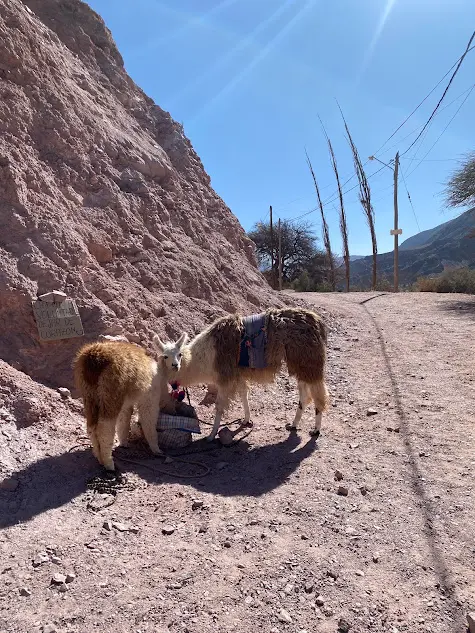
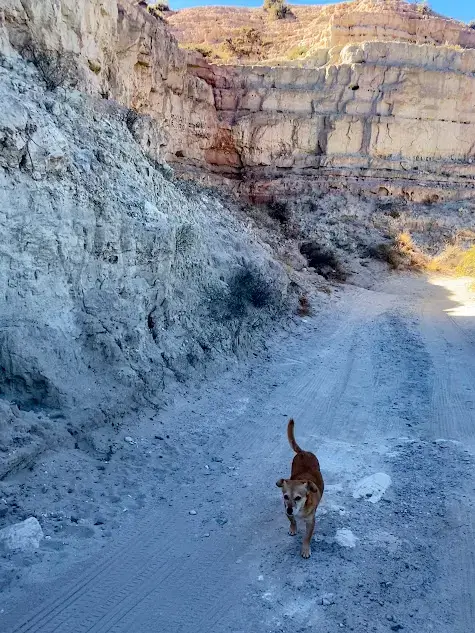
When to visit the North of Argentina?
The best time to visit the North of Argentina is Spring (September-November) and Autumn (March-May). This time of year brings mild weather, beautiful landscapes, and comfortable travel conditions.
Prices won’t be as high as they are in the peak summer months and you won’t be swarmed by tourists on their summer break.
Summer (December to February) in Argentina can be intense. As temperatures can go above 40°C, outdoor activities in this region can be difficult.
Summer is also peak season as the weather is hot and many locals take vacations during this time. And hot weather and no work means crowded tourist spots and inflated prices.
Winter (June to August) in Argentina can range from mild to warm. Salta can reach up to 20°C during the winter months but the nights can get very cold.
I visited in July and I wouldn’t recommend it. Tilcara was exceptionally cold and it tainted my experience. The place I stayed didn’t have any heating so the night was horrendous.
Even though I’m from Northern England and have had my fair share of icy winters, the cold there was unbearable.
How to get to the North of Argentina?
If you’re beginning your trip in the North of Argentina, there are two airports in the region: Salta and Jujuy. I wouldn’t recommend trying to fly here first as the flights aren’t the best and you could end up paying 3x the amount you would if you flew into Buenos Aires.
From Bolivia: If you’re crossing over from Bolivia to Argentina, there are daily bus routes that leave the town of Uyuni and drop you in the border town of Villazon.
You can then cross the border by foot into La Quiaca in Argentina. If you’re going to be making this crossing, I’ve covered everything you need in this guide: how to get to Argentina from Bolivia.
From Buenos Aires: The best way to get from Buenos Aires to the North of Argentina is to fly. Salta is approximately a 20-hour drive from Buenos Aires and for the price and convenience, a flight is much more cost effective.
You can get flights for around £60 if you book far enough in advance. Check flights on Skyscanner for the best deals.
How to get around the North of Argentina
The transport system in the North of Argentina is great. You can book online or at the ticket offices for bus tickets. Try to book in advance for the best deals – especially in peak season.
- Bus – the best way to book your bus is through either busbud or platforma10. I used platforma10 for all bus journeys I took in Argentina. You can also pay at the ticket office but this will most likely be cash only.
- Rent a car – you’ll have more freedom to get around and to make stops especially along Route 33 for some incredible views. If you have the opportunity, a car would be the ideal way of getting to enjoy all of the scenic drives Northern Argentina offers.
- Flights– domestic flights in Argentina can be relatively affordable, especially if booked in advance. Flight prices can rise significantly during peak travel seasons, such as holidays, summer months (December to February), and around popular events, so factor this in when planning your trip.
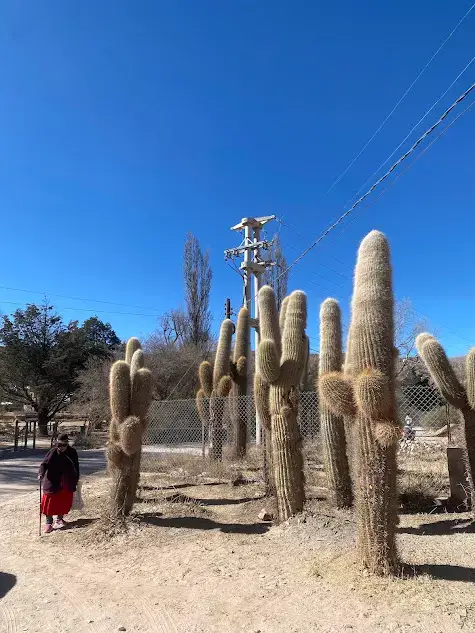
Getting money out in Argentina
I’m sure if you’re planning a trip to Argentina you’re probably wondering the best way to get cash out. Argentina has plenty of ATMs throughout the major cities but it’s not recommended to use ATMS for money withdrawal.
In Argentina ATMS are capped, the fees can be high, the exchange rate isn’t the best and the ATMS can run out of currency altogether.
If you do decide to use ATMS go to banks that have an inside counter to protect yourself from theft. And bear in mind that smaller towns may not always have ATMS, so remember to take enough cash with you.
The best way to get money out in Argentina is to use Western Union. With Western Union, you’ll get the best exchange rate. To do this you’ll need to create an account.
It’s easy to set up and should only take about 5 minutes. Once you’ve created your account, you can make a transfer to a branch near you to pick up your cash. You’ll need the tracking code and your passport.
What is the Argentine peso exchange rate? The Argentine peso exchange rate is approximately:
- £1= $1,250 ARS
- $1= $950.3 ARS
- €1 = $1,053 ARS
So, why is the North of Argentina worth visiting? Let’s dive in…
7 places not to miss in the North of Argentina
1. Humahuaca
Humahuaca is a small town in the heart of the Jujuy province and one of my favourite places in Argentina. The multi-coloured mountains, artisan markets and cosy traditional cafes in the town make it a perfect spot to spend a few days.
It’s also one of the few places left in the country where the indigenous culture is still present, influencing the cuisine, the language and the music in this region.
Humahuaca alone makes the North of Argentina worth visiting.
The most popular attraction in Humahuaca is ‘El Hornocal’ Argentina’s very own Rainbow Mountain. Often overlooked for its neighbour Rainbow Mountain in Peru, this mountain is renowned for its striking multi-coloured rock formations.
But there’s more than just the mountain to see in this little town. If you’re considering adding Humahuaca to your itinerary, read more on everything you can do in Humahuaca.
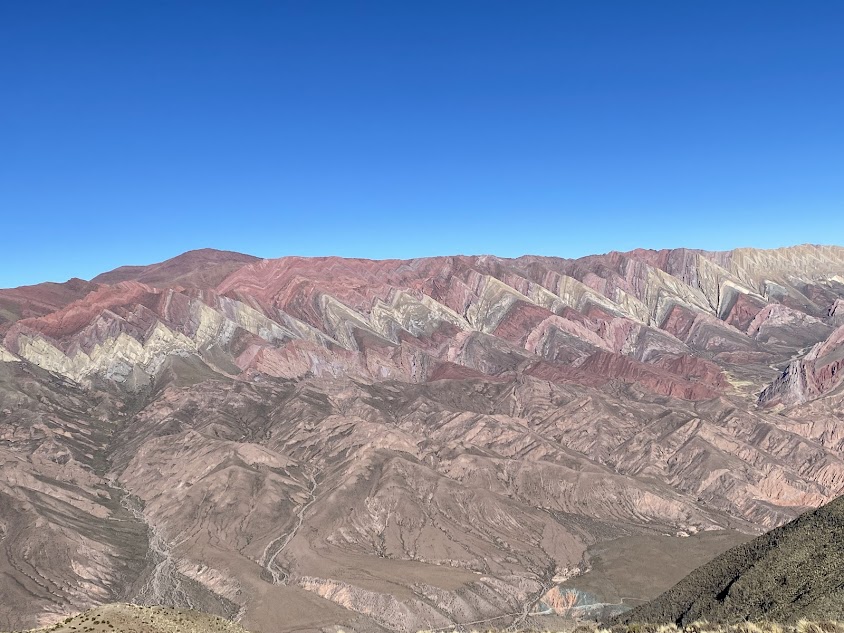
2. Purmamarca
Purmamarca is another town in the Jujuy Province and is approximately an hour’s drive from Humahuaca. The town itself is only small and can easily be seen in one day.
It makes for the perfect day trip from Humahuaca. You can wander around the entire town centre in an hour or so and still have plenty of time to see everything else.
The main attraction in Purmamarca is the Cerro de Los Siete Colores (Hill of 7 Colours) that surrounds the town.
Although not quite as impressive as the Rainbow Mountain in Humahuaca, it’s a beautiful place with a special charm.
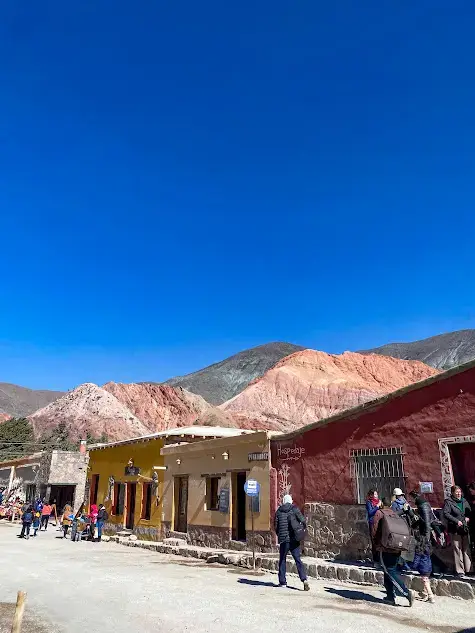
3. Cafayate
If you’re a wine lover, you need to add Cafayate to your Argentina itinerary. Cafayate is a cosy town located in the province of Salta and best known for its vast vineyards, wineries and wines.
It’s particularly famous for its Torrontés, a fragrant white wine unique to the area. You have the option to explore bodegas to sample and learn about its most famous wine and maybe even buy a bottle for yourself.
Cafayate is also the perfect base for a day trip to one of the most impressive natural wonders in Argentina, the Quebrada de las Conchas.
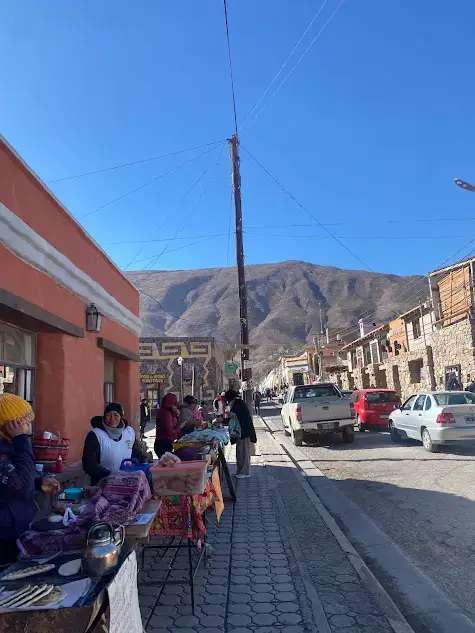
4. Tilcara
Tilcara is a small town a 40-minute drive from Humahuaca and a 2-hour drive from Salta. Its location makes it a perfect base for day trips in the region.
Tilcara is particularly special because of its location. Nestled in a valley surrounded by colourful hills that create a dramatic backdrop for the town.
You can explore the markets where you’ll find plenty of artesian vendors selling traditional crafts and textiles.
Visit the ancient Pucara de Tilcara which is a pre-Inca fortress with amazing views of the surrounding mountains or hike to the famous Devils Waterfall.
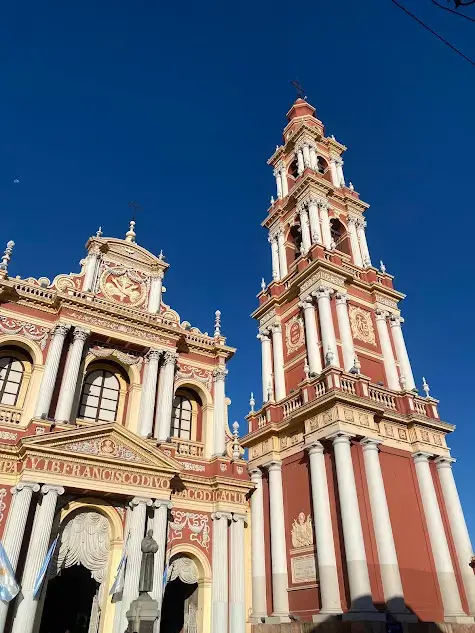
5. Salta
Salta is one of Argentina’s most beautiful cities with so much to offer. The centre is stunning, with cobblestone streets, impressive colonial architecture and pristine plazas you can spend hours in.
I loved the atmosphere in Salta and was lucky enough to spend the weekend of the Copa final there. The passion, joy and kindness of the people will forever be a beautiful memory of this city.
If you have the opportunity to visit the North of Argentina during a big football game, I’d recommend it. They know how to celebrate!
Sample the incredible food that’s rich in local flavors, especially Saltas famous empanadas.
Wander around Plaza 9 de Julio and grab some traditional Argentinian food at one of the many restaurants in the plaza or visit one of the most popular landmarks of Salta – the stunning San Francisco Church.
If you want to catch some amazing panoramic views of the city, head to the top of Cerro San Bernardo and see the city from above.
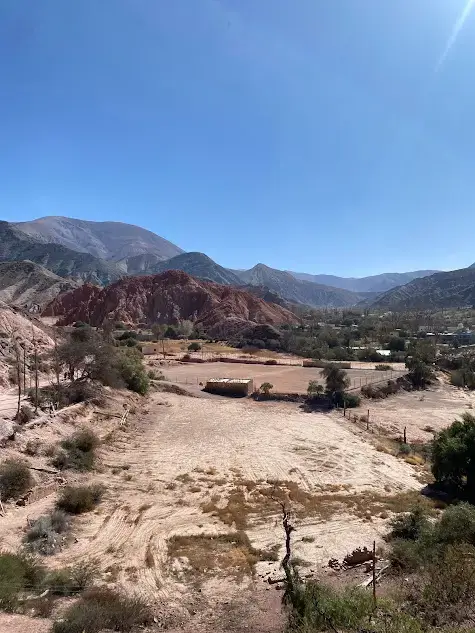
6. Iruya
Iruya is a small town located in the Province of Salta and is perfect to spend a few days if you love to hike. The great thing is, as the town is more difficult to get to, there won’t be the crowds of tourists you see on many trails.
One of the most popular hikes in the town is the San Isidro trek. It’s a scenic hike through canyons and towns, trekking up hills with breathtaking panoramic views.
The trail begins in the centre and continues along the San Isidro River, passing through several canyons before you reach the village of San Isidro de Iruya.
You can choose to do the trek as a day trip or do the entire route there and back over 3 days. It’s the perfect stop if you’re looking to explore nature, traverse scenic hiking trails and learn about the history of the nearby indigenous communities.
7. Cachi
Cachi is a small colonial town around three hours from Salta and is considered one of the most beautiful places in all of Argentina.
This little town was high on my list of places to visit after a recommendation from a friend who lives in the area. Transport issues meant I never made it there, but it’s one of my reasons to return.
If your renting a car whilst in the North, the drive from Salta to Cachi runs along Ruta 33 and is considered one of the most scenic drives in the country.
What to eat in the North of Argentina?
The North of Argentina is a hub for delicious local dishes rich in flavour. And it’s home to some of my favourite dishes in the country.
You have to visit the north to sample some of their incredible recipes. But there are so many food options available it can be difficult to know where to begin.
Empanadas Salteñas
You can’t visit Argentina and not try out their empanadas. My empanada intake was high in Argentina, with a record of 6 in one day you could say I developed a liking for them.
It’s a longstanding claim that the best empanadas come from Salta in the North of Argentina. And honestly, I can’t say it’s wrong. It’s worth visiting the North of Argentina for these alone.
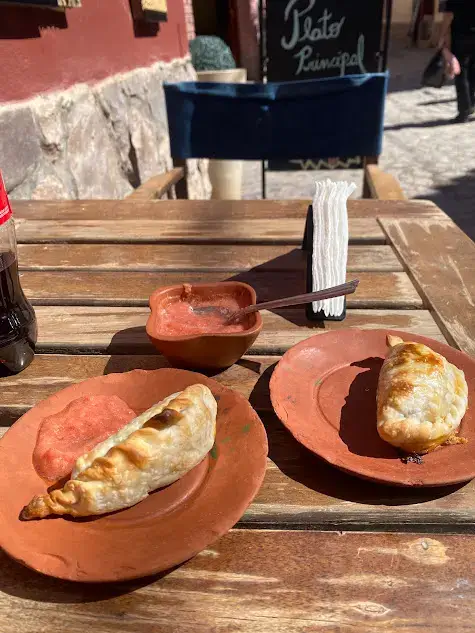
Tortilla Rellena
When I first arrived in Humahuaca after a long day crossing the border, catching buses and adjusting to a new country, I was on the hunt for some good food.
Luckily the first thing I saw was a group of women selling tortillas rellenas on the corner of the street with a crowd of people lining up to be served (always a good sign).
They smelt great and tasted even better. You can choose your fillings, usually all made with queso, for the amazing price of 2000 pesos.
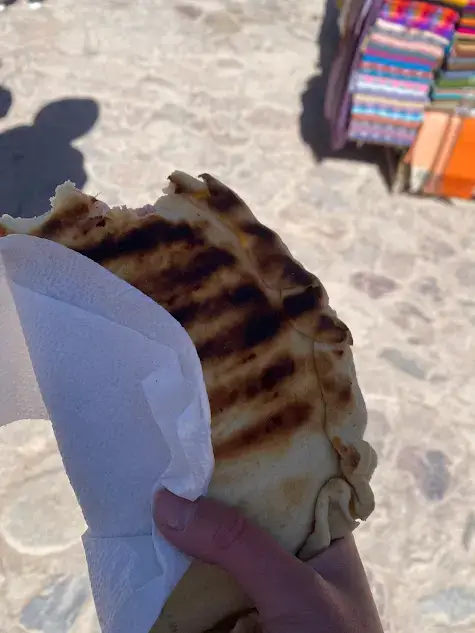
Llama
I had my fair share of llama whilst in Peru, but wasn’t expecting to find it in Argentina.
Popular in the North, its roots go back to the indigenous Andean people who lived in these regions. You will find many of the restaurants in the towns will have llama on their menu.
Some of the most popular dishes are: milanesa de llama, cazuela de llama and lomo de llama. If you’re in the area, make sure to try it.
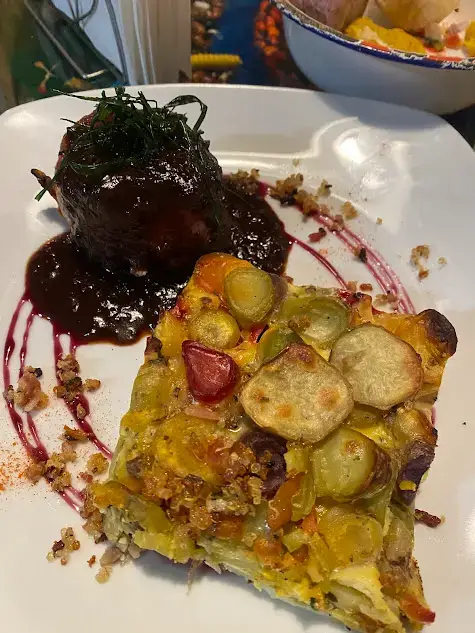
Dulce de Leche
Dulce de leche or heaven on a plate is basically a sweet, creamy caramel-like sauce that you’ll see everywhere in Argentina.
It’s used on all sorts of cakes and pastries, ice-creams and dessert toppings. You can even get dulce de leche churros.
If you love your sweet treats, you’re going to be hooked. I couldn’t believe I’d had 28 years on this earth without trying it before.

Other local foods to try:
Locro is a hearty stew made from corn, beans, potatoes, and various meats like chorizo, pork, and sometimes beef.
Humita is a dish made from fresh corn mixed with cheese, onions, and spices, wrapped in corn husks, and then steamed or boiled. It can be served in the husk or as a casserole.
Quinona is a staple food for many indigenous communities and is widely used in the north. It’s often prepared in soups, stews, or as a side dish with vegetables.
Tamales salteños in the north of Argentina are similar to humita but are typically filled with a mixture of corn dough (masa), meat, and spices, then wrapped in corn husks and steamed.
Cazuela is a type of stew that varies by region but often includes a mixture of meats (like beef or goat), vegetables, and sometimes legumes. It’s a comforting dish, perfect for the cooler climates of the Andean north.
So is the North of Argentina Worth Visiting?
The North of Argentina is a unique place to visit in a country that offers so much to any kind of traveller. I hope this post inspired you to add the North of Argentina to your travel list and that you love it as much as I did.
If you need more suggestions on things to do whilst you’re in Argentina, have a look at some of my other posts.
Other Posts You May Like:

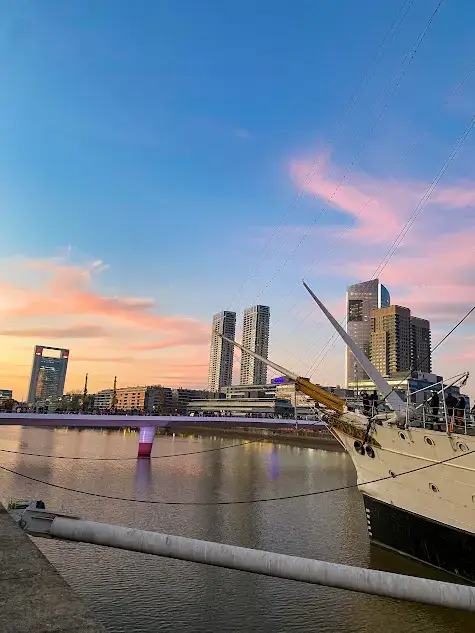
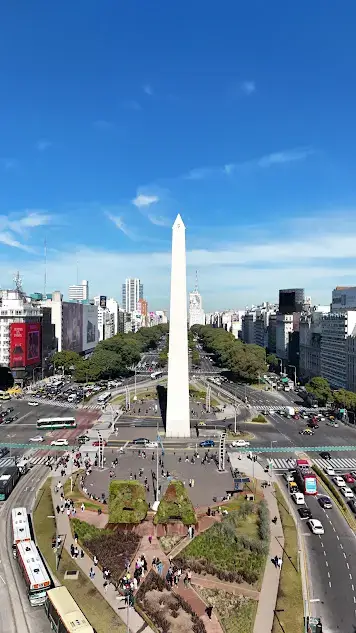
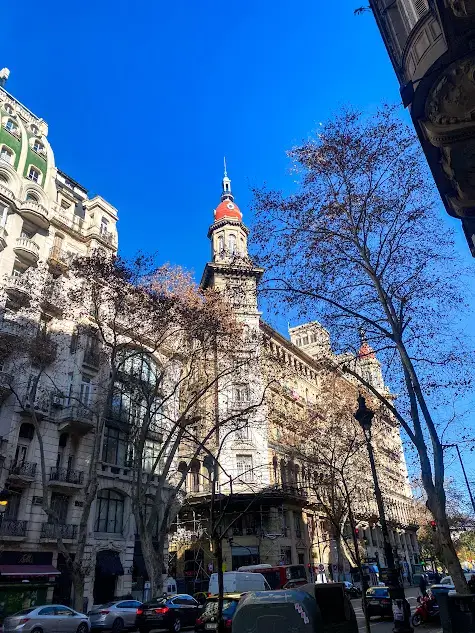
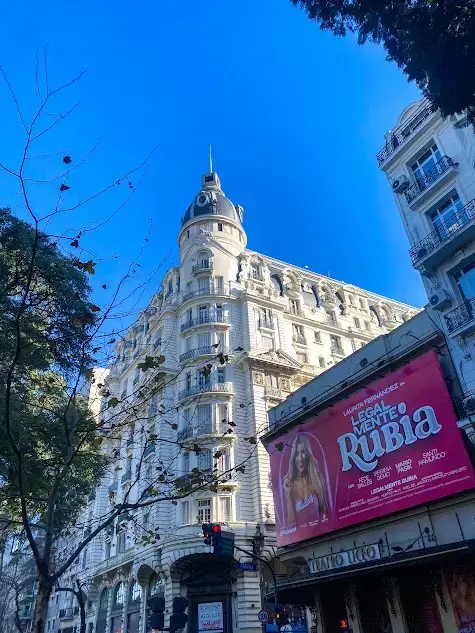
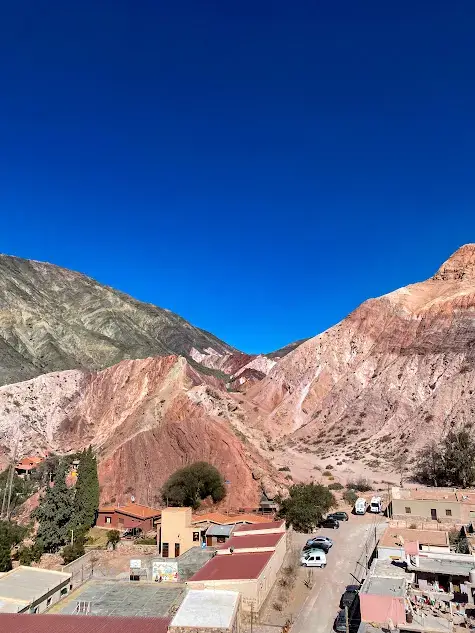
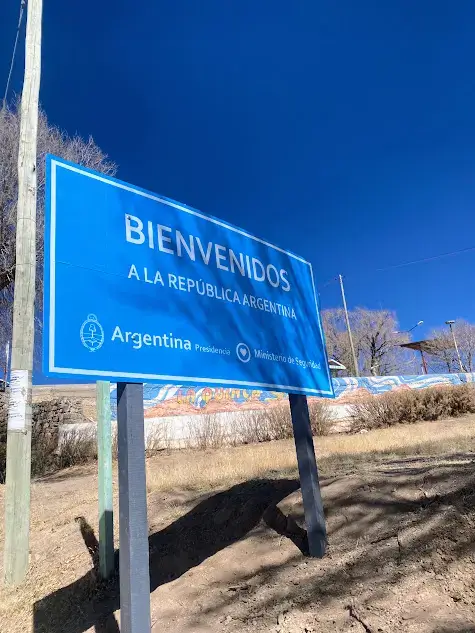
6 Comments